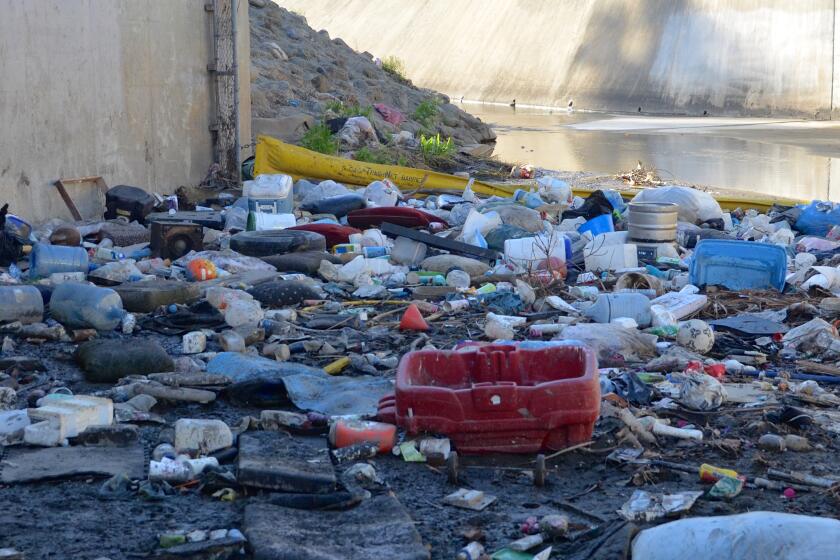Officials grapple with how to help young gray whale out of Newport Harbor
Sgt. Paul Ketcham of the Orange County Sheriff’s Department Harbor Patrol found himself on a bit of a wild goose — or rather, wild whale — chase Tuesday morning in Newport Harbor.
Ketcham spent about four hours on the water searching from the far reaches of Upper Newport Bay near Jamboree Road to the American Legion on the Balboa Peninsula for a 20-foot juvenile gray whale that has made Newport Beach waterways its personal playground since last week.
The whale, which showed up in Newport Harbor on Thursday, was seen Friday and again Sunday in the Back Bay, officials said.
On Tuesday, boaters reported seeing the whale in Upper Newport Bay and in the harbor near the Balboa Peninsula. But Ketcham couldn’t catch sight of it.
“I’d like to think it tried to leave,” Ketcham said. “I hope it left, but I don’t think it did.
“Every time we think it left, we find it again,” he said.
Newport Coastal Adventure captain Taylor Thorne, who was among the first to see the whale just before noon Thursday as it cruised up the main harbor channel toward Lido Isle, said he suspects it’s the same whale that was seen in Dana Point Harbor on Aug. 8 and that it’s trying to make its way up the coast.
Officials with the National Oceanic and Atmospheric Administration and the Pacific Marine Mammal Center in Laguna Beach have the same idea.
The Pacific Marine Mammal Center, which has been observing the whale since it reached Dana Point from San Diego, is working with NOAA to determine how to help the mammal continue its journey, said center spokeswoman Krysta Higuchi.
Gray whales, which have the longest migration of any mammal, usually spend the summer feeding on plankton off Alaska. In the fall, they migrate to warmer waters off Baja California.
It’s not clear why this one stopped in Newport Beach when most of its fellow whales already had made their way through the area en route to Alaska.
Higuchi said it’s uncommon for whales to spend more than a few hours inside a harbor. She noted this whale appears to be thin and might be sick.
But researchers must gather more information before they can determine how to help the youngster, Higuchi said.
“We have to be smart and methodical in these situations,” she said. “Rushing in without a plan has more potential to do more harm than good.”
Justin Viezbicke, who deals with sick and stranded animals for NOAA, said his team will be on the water Wednesday to observe the animal and get a better understanding of why it might be hanging around the harbor.
One of the questions he hopes to answer is whether the whale, which he suspects is about 1 year old, has sought refuge in the area because it’s sick or is simply lost.
This is likely the whale’s first trip up the coast on its own, so it’s possible it went off course. The whale hasn’t been showing signs of stress, so officials have left it alone in the hope that it will find its way back to the ocean, Viezbicke said.
So far, however, that hasn’t happened.
To usher a whale out of an area, officials typically will position boats so the sound of the motors makes the area less appealing. Loud noises can make a whale leave but also can stress the animal out.
“The tricky part is, even though we might like it to be out of the area, convincing a whale to do that is a whole other ball of wax,” Viezbicke said. “It may not work at all.”
Twitter: @HannahFryTCN
All the latest on Orange County from Orange County.
Get our free TimesOC newsletter.
You may occasionally receive promotional content from the Daily Pilot.




